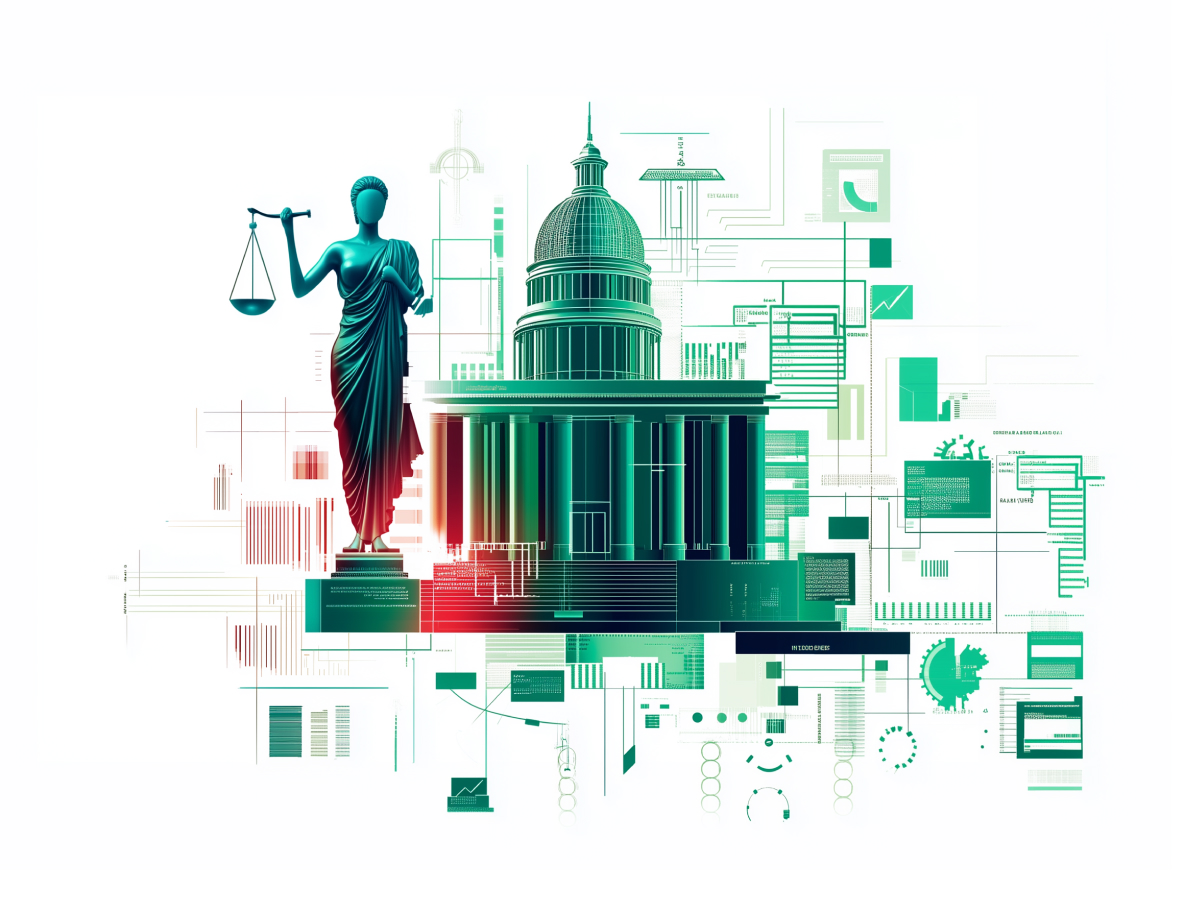Why generative AI is surging in legal firms
The legal sector, characterized by document-intensive tasks and extensive case preparation, finds genAI invaluable for streamlining traditionally labor-intensive workflows.
What once took teams of associates weeks or even months to complete can now be accomplished with greater speed and accuracy, ultimately driving down costs and enhancing productivity.
Growing adoption points out a major shift within the industry, where firms are increasingly open to experimenting with AI to remain competitive.
Large firms are particularly motivated, both to increase efficiency and to attract clients by showcasing AI capabilities that reduce costs.
Firms are using AI tools like document categorization, automated drafting, and data analysis to improve accuracy in tasks such as eDiscovery, which requires reviewing millions of documents.
Why legal firms are rapidly expanding AI use
The last year has seen a remarkable rise in AI usage within law firms, jumping from 19% to 79% in total adoption. Clio’s recent data shows that 20% of large firms have integrated AI into their processes, with an additional 15% considering it—a trend fueled by the pressure to manage extensive case data efficiently.
Swift growth here points to the broader recognition of AI’s potential to handle data-heavy legal work, reducing reliance on human associates for tasks like initial discovery and documentation review.
The technology is accessible even to junior attorneys, so that entire legal teams can engage with AI-driven workflows without extensive technical training.
Firms implementing AI often cite a competitive edge in offering faster, more cost-effective services. With clients demanding efficiency and transparency, these tools deliver results while helping firms meet client expectations.
Strategic investments in genAI fuel legal innovation
Large law firms are prioritizing AI investment, allocating budgets to license cutting-edge genAI software and to recruit specialized staff and build internal innovation teams.
Gartner reports that firms are increasingly setting up dedicated AI pilots to explore optimal use cases, from automated contract review to eDiscovery, making sure solutions are tailored for each firm’s specific needs.
Beyond initial software purchases, firms are investing in training programs to upskill attorneys and staff, making sure teams can maximize genAI’s potential without extensive technical overhead.
Practical applications of genAI for streamlined legal operations
As genAI becomes a key tool for modern legal workflows, its applications are expanding beyond simple document processing to sophisticated data analysis and contract management tasks.
From eDiscovery to contract lifecycle management, AI is transforming processes that once required intensive manual oversight, helping lawyers deliver faster, more precise outcomes for clients.
Using genAI to automate eDiscovery and document review
In document-heavy tasks like eDiscovery, genAI shines by categorizing, summarizing, and drafting content across millions of documents, reducing the human resources needed and shortening case preparation timelines.
Cleary Gottlieb’s ClearyX, for example, has greatly cut down on labor by reducing the number of attorneys required for major cases from 150 to around 45, streamlining discovery and cutting costs.
Improved efficiency provides immediate, actionable benefits to law firms managing extensive case data and high client demands. For tasks that traditionally took weeks, genAI’s ability to quickly identify relevant documents and highlight critical data points lets law firms complete cases with fewer delays and reduced overhead costs.
Driving efficiency in high-volume legal practice areas with genAI
Generative AI’s automated workflows bring particular value to high-volume practice areas with repetitive tasks, such as traffic and immigration law, where efficiency gains are immediately noticeable.
Civil litigation, typically characterized by immense document volume, also benefits greatly, as genAI quickly processes large datasets, reducing time and labor.
AI-driven tools in these sectors streamline document reviews and simplify repetitive legal work, letting attorneys focus on client strategy rather than clerical tasks.
Time savings from genAI adoption improves the bottom line and boosts client satisfaction as cases progress more predictably.
Automating contract lifecycle management to improve risk mitigation
Firms can query digital contracts to find information like clause details, renewal terms, or liability conditions, supporting faster and more informed decision-making.
For example, AI-driven contract lifecycle management tools let lawyers maintain comprehensive contract records, helping firms monitor obligations and avoid potential liabilities proactively.
As legal departments face increased pressure to guarantee contract compliance and manage risk, these tools are key. AI’s predictive analytics assist legal teams in assessing contract terms, mitigating risk, and complying with regulatory standards, adding strategic value to a firm’s contract management approach.
How AI adoption is changing legal billing models
As generative AI automates repetitive and data-heavy legal tasks, it’s driving a shift away from the traditional hourly billing model toward flat-fee structures that clients find more predictable and cost-effective.
With AI handling routine tasks, the financial incentive to charge by the hour diminishes, and legal teams are increasingly adopting flat-fee billing to reflect this new workflow efficiency.
The shift to flat-fee billing models in AI-driven legal workflows
According to Clio’s survey, law firms have increased flat-fee billing by 34% since 2016, driven by both client preference and the efficiencies that AI automation brings.
Currently, 71% of clients favor a flat fee for complete cases, while 51% prefer it for specific tasks, suggesting that predictability in billing is a growing priority among legal clients.
As firms adopt flat fees, they experience faster billing cycles and quicker payment collection, creating a win-win for clients and firms alike.
There’s a broader industry trend toward transparent pricing structures, with firms reaping the financial benefits of AI’s ability to reduce manual labor. Through moving to flat fees for AI-powered services, firms cater to client expectations while creating a streamlined billing experience.
Balancing costs and benefits of AI in legal billing
With up to 74% of billable tasks now automatable, AI offers clear efficiencies, but not without certain costs.
Initial setup expenses for genAI tools can sometimes approach the costs of hiring human associates, especially as firms explore various AI models and make major investments in software licensing and training.
Law firms must therefore carefully balance the initial costs of AI adoption with the long-term gains in efficiency and accuracy that AI provides.
Through automating routine tasks and focusing human expertise on review and oversight, law firms are achieving a flexible billing structure that meets client demands while addressing the nuanced economics of genAI’s implementation.
As a result, firms can preserve hourly billing for specific high-value tasks that require a human touch while moving most routine, automatable tasks to more client-friendly flat fees.
Key challenges and strategic considerations for adopting genAI
While the potential benefits of AI-driven workflows are major, the technology’s limitations, especially in high-stakes tasks, require firms to approach adoption strategically.
Improving accuracy and security in AI-driven legal tools
AI “hallucinations” and data security bring very real risks in legal applications, especially for tasks like due diligence where accuracy is a must.
Legal professionals typically face AI-related concerns around client confidentiality and data protection, as generative models require rigorous safeguards to prevent unauthorized data access. Adding to this, training AI on non-legal datasets can increase the risk of inaccuracies, complicating tasks that rely on precision.
To address these issues, some firms are pursuing custom AI models that prioritize accuracy by focusing exclusively on legal materials.
Pioneering AI experiments to optimize legal operations
In response to genAI’s limitations, law firms are developing tailored legal AI models, often testing multiple (three to five) to find optimal solutions for document review, data analysis, and contract management.
Firms adopting this approach find that tailored AI models reduce error rates and deliver more accurate insights, adding value to legal operations.
Strategic experimentation offers a path for firms to address genAI’s limitations while capitalizing on its efficiency benefits, allowing legal teams to implement AI thoughtfully without compromising quality.
Preparing legal teams for an AI-augmented future
Integrating generative AI is changing attorney roles and creating opportunities for legal professionals to focus on high-value tasks. Attorneys can redirect their efforts toward complex, strategic work, positioning legal teams for greater efficiency and adaptability.
Industry experts, including Harvard’s David Wilkins, point to the efficiency gains that generative AI brings to law, noting that while AI’s full potential remains untapped, its impact on legal workflows is already evident.
Current implementations of genAI are often seen as early-stage “experiments,” yet they show AI’s potential to disrupt routine legal work by reducing manual labor and focusing human expertise on value-added tasks.
Executives and thought leaders in the legal field emphasize that while AI adoption is still in its infancy, its ability to transform operations signals a shift in the legal profession’s future trajectory.





